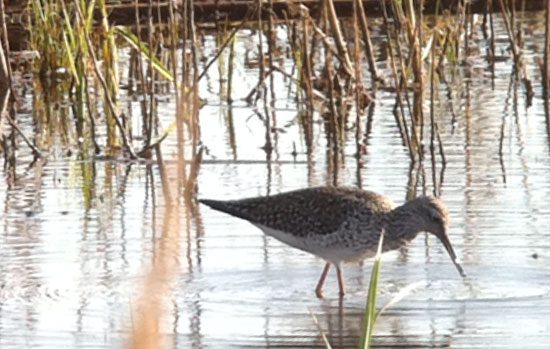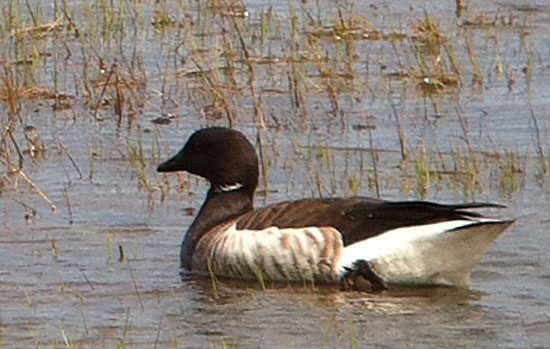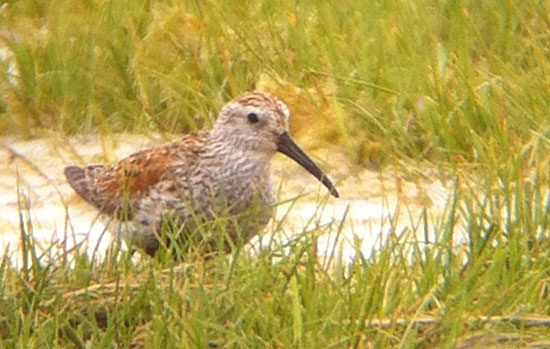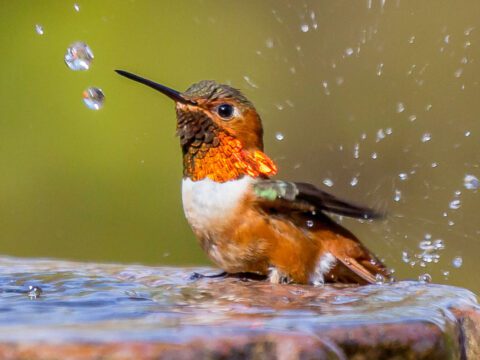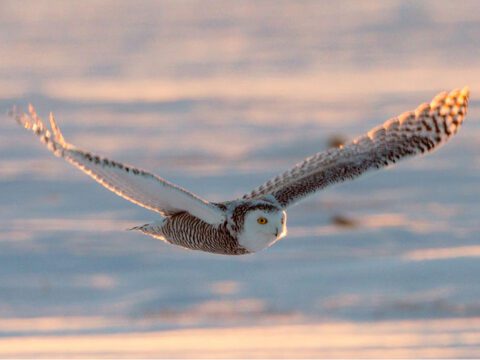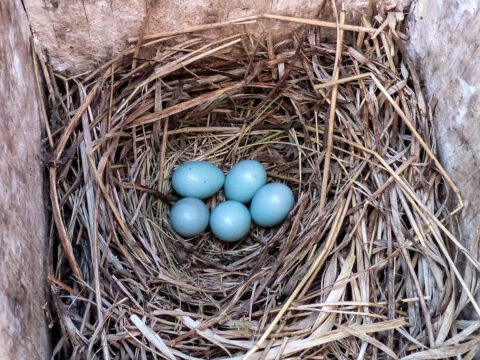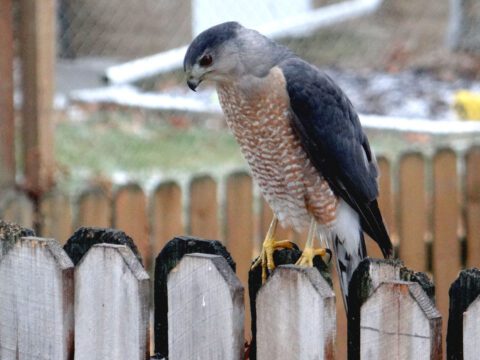Busy, Birdy Scouting for World Series of Birding Teams
Images and text by Hugh Powell May 11, 2011
Lesser Yellowlegs strolled around pond margins with careful steps of their bright yellow feet 
High tide brought Brant—one of my favorite waterfowl—within camera range 
Thousands of Dunlin decorate the New Jersey saltmarshes—but what other species are with them?
Wednesday was the first full day of scouting for our two World Series of Birding teams, the Redheads and the Anti-Petrels. We’re doing what you do during scouting week—re-learning bird calls, re-finding birds we can count on, obsessing over which route we should take on Saturday, second guessing the route we took last year, and checking for new spots in the hopes of finding something magical—all as fast as possible and with the general pleasure that comes with spending 18 hours a day bird watching.
By the end of today both teams had found a few good birds, but also learned about this year’s specific challenges, including a late spring and an underwhelming migration.
My team, the Anti-Petrels, gathered in New Jersey at midnight. We sat up around a campfire at Belleplain State Forest talking strategy until 1 a.m. With just four hours to go until dawn, and as a Barred Owl hooted us welcome from the tall pines, we climbed into our tents.
Four hours later I had counted a dozen species before dragging myself from my sleeping bag—songs of birds like Yellow-throated Warbler, Wood Thrush, Fish Crow, and Great Crested and Acadian Flycatchers. Then we headed out to the saltmarshes and scrubby woods of Heislerville.
In the past few days people have reported as many as four very rare Curlew Sandpipers in Heislerville—thrilling me with the prospect of a new bird (a “lifer”) just days before the World Series. That excitement cooled somewhat at the sight of thousands upon thousands of Short-billed Dowitchers and Dunlin speckling the Heislerville mudflats, with hundreds of Black-bellied Plovers walking around among them like chaperones. We didn’t find the Curlew Sandpipers, but we’re hoping that a high tide on the day of the event will push them closer to shore. Meanwhile, we saw Ruddy Turnstones, a couple dozen Black Skimmers, Ruddy Ducks, and three Bald Eagles.
In the woods just inland from the Heislerville marshes, yolk-yellow Prothonotary Warblers exclaimed at us from dark swamps glittering with still waters. This year’s rainy weather has been good for birds of wet woods—but it also seems to have slowed spring and dampened migration. Last year, Belleplain was white with mountain laurel blossoms—this year it’s filled with dogwood blooms that haven’t faded yet. The mountain laurel is only just budding. Folks everywhere are having a hard time scrounging up migrants—we heard Swainson’s Thrushes and saw Yellow-rumped Warblers today, but otherwise it was the chirps and whistles of resident birds such as Scarlet Tanagers and Orchard Orioles that filled our ears. Now we’re trying to decide how much time on Saturday we should devote to “lucky” migrant spots, and how much we should invest in a smaller number of more dependable resident species.
A Big Day in New Jersey is only half spent in the trees—we spent the afternoon along the beaches and tidal inlets of the Atlantic Coast and Cape May itself. The broad grasses of Stone Harbor were positively brimming at high tide—it was hard to imagine how the Saltmarsh Sparrows could continue to hide themselves from us with so little vegetation exposed. Red Knots and Whimbrels gathered on sandy rises amid the marsh grass, and we saw both a young Peregrine Falcon and a Merlin coursing hopefully past them. Brant paddled close to shore among the drenched grass tips, giving us great views of these dainty geese.
We finished the day running around Cape May proper—we’ll ride our bikes down here on Saturday, hoping to arrive with a good four hours to spare before sundown. This is one of the birdiest places in the country, and no matter how small it looks on a map, there’s lots of ground to cover. My favorite moments today involved birds both mundane and exotic: great views of several Parasitic Jaegers at once. They were hunting down Common Terns off Cape May Point to steal their fish. These are powerful, dark-brown birds with buffy flashes in their wings, and as they swooped above the horizon in tightening spirals after the white terns, the contrast in their styles made it hard to decide who to root for.
We left Cape May Point to check a section of beach and marsh we didn’t have time to visit last year. As the sun dipped, a Green Heron winged over, and a chatterbox Northern Mockingbird mimicked an American Kestrel, perhaps unaware of how rare that species is in southern New Jersey. As we turned to go, France heard a sweet introductory note leading into a buzzy trill. “White-crowned Sparrow!” he said, and moments later Charles had found it singing from the fence outside a mini-golf course—a migrant late for its summer appointments in Canada. The bird put us at 123 species for the day—a hopeful start to our scouting.
After dinner I heard from Jay McGowan, the captain of the Redheads. They had spent the day scouting the north part of Cape May County. Jay knows the standard route well, having refined it over the last four World Series, but he was prepping the two newest members of the team, Hope Batcheller and Andy Johnson. They, too, noticed the dearth of migrants, and are just hoping for the best. Their highlight came with a rare White-faced Ibis they found near the county line—check their Facebook page for pictures.
As Whip-poor-wills chant in Belleplain (species #124 for the day!) it’s time for a bit more sleep, and then more scouting tomorrow. Thanks to everyone for following along with our adventures and for supporting us through comments to our Facebook page and donations to support student research and conservation at the Cornell Lab.

All About Birds
is a free resource
Available for everyone,
funded by donors like you
American Kestrel by Blair Dudeck / Macaulay Library
